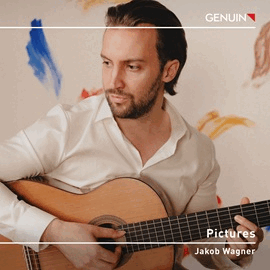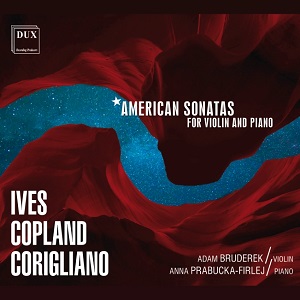Die drei eingespielten Violinsonaten zeigen von der am klassischsten ausgerichteten Sonate von Copland über die auch weitgehend, aber eben nicht ausschließlich tonal angelegte Sonate von Corigliani, ebenfalls sein einziger Gattungsbeitrag, bis hin zur ältesten Sonate, die zweite von vier, von Ives unterschiedliche Herangehensweisen von amerikanischen Tonsetzern. Unüberhörbar auch, dass die Werke, gerade auch das von Corigliani, bei aller Zugänglichkeit immense technische und auch interpretatorische Anforderungen an die Interpreten stellen.
Der primär im polnischen Umfeld aktive Geiger Adam Bruderek hat sich diese drei Werke zusammen mit der Pianistin Anna Prabucka-Firlej vorgenommen. Ihm gelingt es, die modernen Elemente der Tonsprache deutlich herauszuarbeiten und so ein raues und intensives Ergebnis zu präsentieren, das die Werke noch moderner klingen lässt, als man es eigentlich erwarten würde. Besonders im Werk von Corigliani, ursprünglich als Duo und nicht als Sonate tituliert, wird klar, dass der Pianopart nicht nur eine Begleitung, sondern eine eigene Herausforderung ist. Dieser stellt sich die Pianistin mit Erfolg und bietet so die gleichberechtigte Partnerin, derer die Musik bedarf.
The three recorded violin sonatas show different approaches of American composers, from the most classically oriented sonata by Copland to the sonata by Corigliani, also his only contribution to the genre, which is also largely but not exclusively tonal, to the oldest sonata, the second of four, by Ives. It is also unmistakable that the works, especially that of Corigliani, for all their accessibility, place immense technical and also interpretive demands on the performers.
The violinist Adam Bruderek, who is primarily active in Poland, is performing these three works together with the pianist Anna Prabucka-Firlej. He succeeds in clearly bringing out the modern elements of the tonal language, presenting a raw and intense result that makes the works sound even more modern than one would actually expect. Especially in the work by Corigliani, originally titled as a duo rather than a sonata, it becomes clear that the piano part is not just an accompaniment, but a challenge in its own right. The pianist rises to this challenge with success, providing the equal partner the music needs.





















